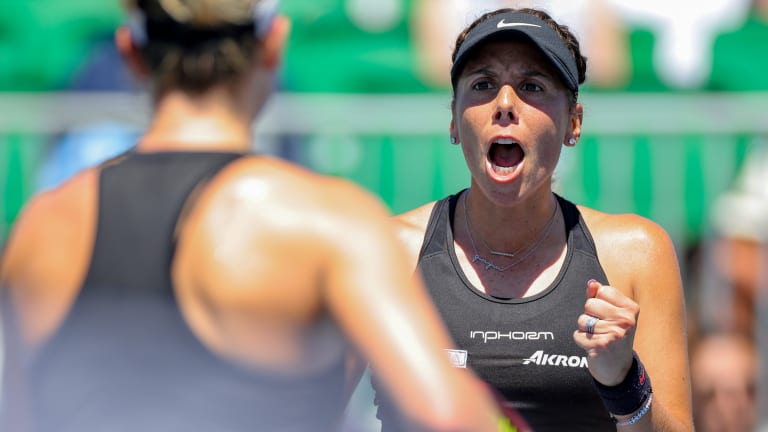A positive attitude was exceptionally important for Olmos during her early years as a pro. Like all tennis players, Olmos had always dreamed of singles greatness. But attaining results was not easy. In March 2019, nearly three years after graduating USC, Olmos had reached a career-high singles ranking of No. 343.
A typical week in tennis’ minor leagues happened in Budapest, where Olmos shared a single room in an apartment with fellow Trojan Kaitlyn Christian. As new occupants trekked in and out of the unit seemingly 24-7, Olmos and Christian fretted about potential robberies and dined daily on 62-cent slices of pizza. Only at one tournament in 2019 did Olmos earn more than $2,000 in singles prize money. Back home in L.A., to supplement her earnings, Olmos gave private tennis lessons.
But doubles offered other opportunities. In 2019, Olmos paired with Krawczyk to win the WTA event in Nottingham—and $6,150. Nine months later, just prior to the pandemic, the two took the title in Acapulco, and $6,790. Eager as Olmos was to soldier on in singles, she was proving far more successful in doubles.
As more and more ITF tournaments vanished amid the pandemic, Olmos subsequently threw herself into doubles. Paired in 2021 with Sharon Fichman, the two won Rome, reached the finals in Guadalajara, the semis in Miami and Berlin, the quarters at the Australian Open, and qualified for the WTA Finals. By the end of ’21, Olmos doubles ranking had soared into the Top 20.
Over the next couple of years, she cracked the Top 10, peaking at No. 6 in the spring of 2023.
“It just started happening,” said Olmos. “I was getting into Slams.” (And as you can tell in less than ten minutes, from hotels to practice courts to meal options, life on the Hologic WTA Tour is vastly different than the ITF circuit.)


